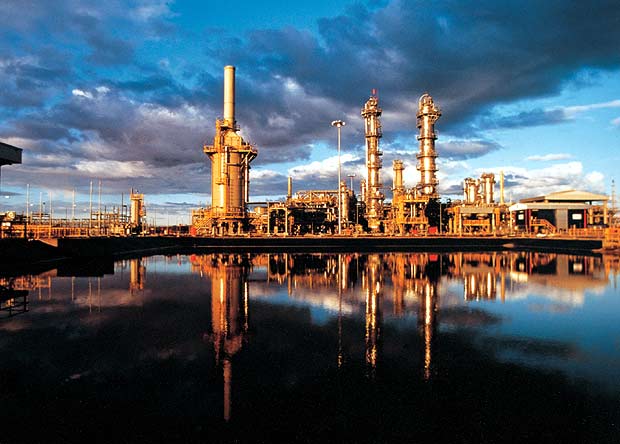The window of the world's energy economy being driven by the rampant
use of fossil fuels is beginning to close. Awareness of this
window closing, however, is slow in coming to both the general public
and especially to elected officials.
Reasonable estimates suggest that world wide fossil fuel production will dwindle
to 10% of its current values in the next 40 years. Accelerated fossil
fuel dependence in India and China will only serve to shorten, perhaps
dramatically, this depletion timescale. Currently, 89% of the world's
energy generating capacity is fossil fuel dependent. Thus, optimistically,
we have about 40 years left to move from a fossil fuel based energy
economy to a sustainable energy economy. Emerging technologies such as
solar photovoltaic cells, improved wind turbines, advanced gas turbines,
hydrogen fuel cells, efficient biomass co-generation facilities, improved
energy storage capacity in batteries, and ocean thermal electric conversion
heat engines, offer us a wide array of choices for alternative means to
derive energy. Yet each of these new forms of energy generation has a
different environmental and ecological
impact in terms of material and land usage and thus this array of choices needs to
be evaluated objectively and fairly.
The focus of this course, therefore, will be to examine competing
alternative energy technologies from the physical, social, economic and
humanistic point of view, all within a context of regional energy
production in the United States.
This course will also touch on the societal/cultural
barriers to energy conservation, since clearly, our energy future also
depends on our ability to act more conscientiously and cooperatively.
Currently each form of
alternative energy has a passionate set of advocates that insist their form
is the "solution". The reality is that regional combinations of different
technologies are the only real solution - there is no one answer.
The problem is complex at all levels. There are engineering challenges,
infrastructure challenges, political challenges, economic consequence, and
cultural impediments.
In this course, the intent is to perform an objective cost-benefit
analysis on each form of alternative energy in order to determine its
feasibility on some regional scale. Full consideration will be given to the
ecological footprint of various forms of energy generation since that is
what the NIMBY public will react most viscerally to. We will pay particular
attention to the efficiency of each alternative energy source as well as what
limitations exist in terms of extracting usable energy and try
to determine feasible large scale projects that could be
implemented in various regions of the US.
The main goals of this class
are to:
- To critically analyze various aspects of our national energy
policy.
- To gain an understanding of the cost-benefit ratio of various
alternative energy sources to see what is feasible in individual
regions within the US and what is not.
- To understand some of the various obstacles associated with actual
implementation of production line alternative energy facilities.
- To do simple calculations regarding the cost of energy usage and
the required infrastructure to deliver a certain amount of power.
- To gain an understanding of how difficult it is to overcome culture
barriers, knee-jerk reactions and the prevalent NIMBY attitude to actually
come up with a working solution.
|
 >
>